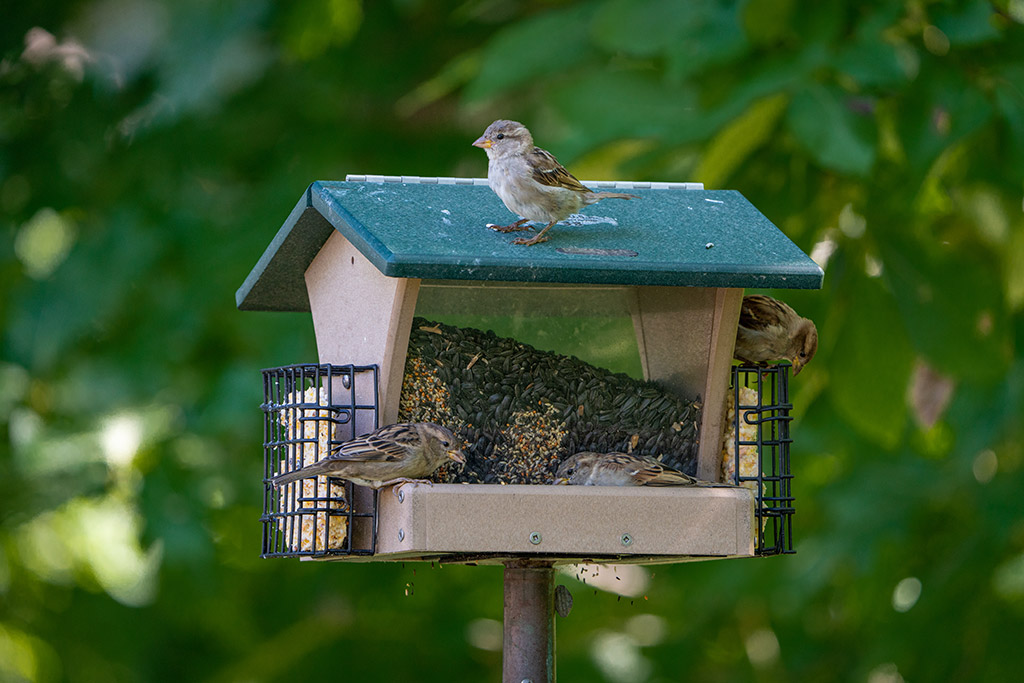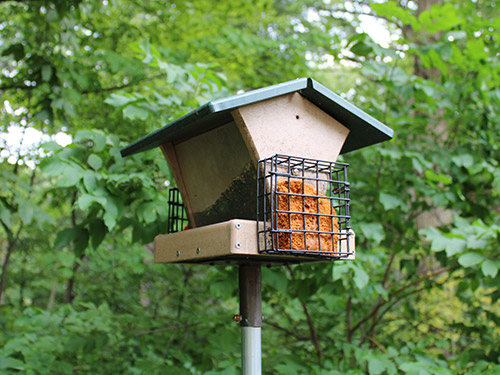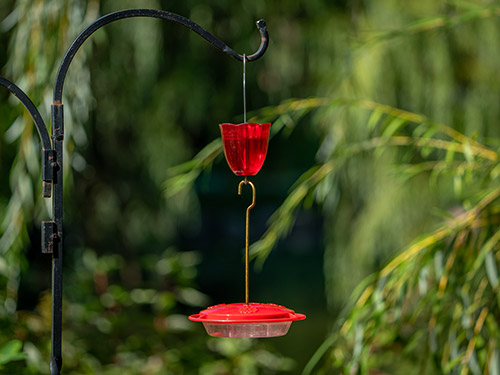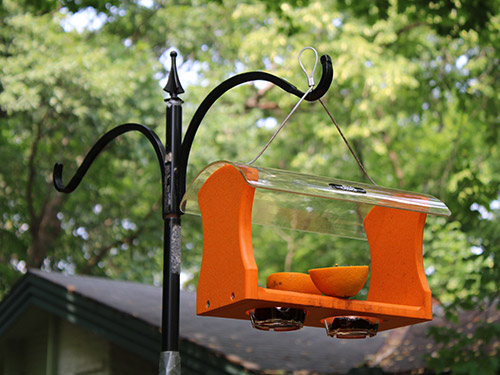The Zoo is filled with animals from around the world and locally. Guests can see them in buildings or their outdoor habitats. But the Zoo and Zoological Society also take care of wild animals in a sense. Through the Wild Birds Program at the Zoo, wild birds are fed, counted and monitored as they come and go from the Zoo. This program is a partnership between the Zoo’s aviary staff, the Zoological Society’s conservation department and Zoo Pride volunteers. “Volunteers fill the feeders rain, snow, or shine throughout the year, and clean and maintain the liquid feeders in the migratory summer months,” says conservation programs coordinator Auriana Donaldson.
Feeders were thoughtfully placed in seven locations around the Zoo. Donaldson says one of the busiest feeders is nestled into the wooded area across from the giraffes. As we go into winter, volunteers need to make sure the birds that don’t migrate such as jays, woodpeckers, house finches and cardinals have a safe place to eat. They use black oil sunflower, finch seed, nyjer and suet and fill the feeders three times a week.
“In the summer months, feeders may account for 10% of overall diet, but in the winter months the feeders can provide life-saving food for birds,” says Donaldson. “This schedule was developed by aviary staff and Zoo veterinarians at the beginning of the bird feeder program, and it has been successful in maintaining clean, healthy and busy feeders!”
In addition to maintaining the feeders, volunteers provide valuable information during two annual bird counting events in the winter. One is in December, the other is in February. “Volunteers counted over 400 birds during the February 2021 count, even amidst negative degree weather!” boasts Donaldson. Bird counts help experts track patterns, trends, breeding, migration and populations. The Zoo also has 35 nesting boxes around the grounds to support and monitor wild breeding and fledglings. Zoo Pride volunteers help monitor the activity and report to a nationwide database. “It’s a lot of work and we couldn’t do it all without our dedicated volunteers!”

Wondering where the bird feeders are spread out inside the Zoo?
- Aviary pond
- Curators House (not publicly accessible)
- Small Mammals Building
- Bird Boardwalk near Lake Evinrude
- Adventure Africa opposite the Giraffe Building
- Family Farm Area
- Peck Welcome Center Boardwalk

Here’s a helpful tip:
The Zoo team uses hot pepper suet squares as part of their feed. This is because the spicy flavor deters squirrels from eating the suet but it doesn’t bother the birds! This is something you can also use at home in your feeders, but be careful to not touch your eyes after putting the hot suet out.

In the summer, volunteers use a liquid nectar – one part sugar to four parts water – for the hummingbird feeders. They also put out oranges and grape jelly for the orioles. These feeders are cleaned and refilled three times a week.

Interested in making a donation for this program?
Contact Auriana Donaldson at aurianag@zoosociety.org.
